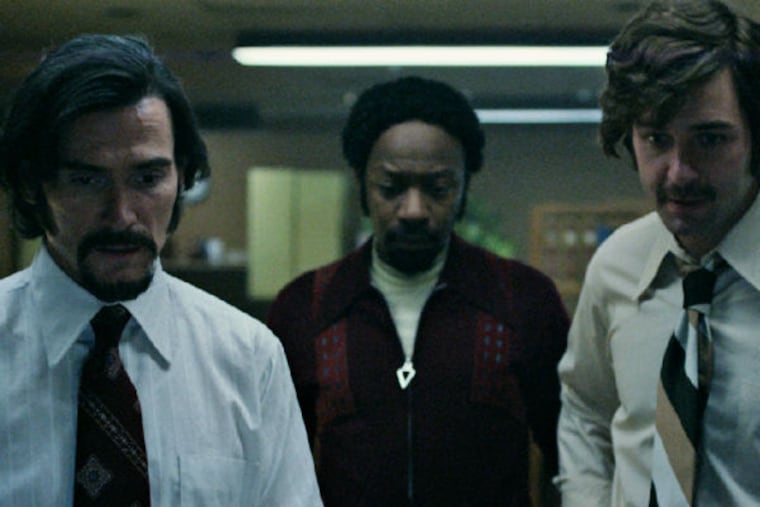'Stanford Prison Experiment': Brutality in imagined incarceration
In 1971, Dr. Philip Zimbardo and his research team split 24 male Stanford students into groups: guards and prisoners. In the halls of the university, he simulated a prison atmosphere, then observed how each group reacted. The study lasted only six days of the intended two weeks, for the guards quickly took on authoritarian qualities and subjected their prisoners to psychological abuse.

In 1971, Dr. Philip Zimbardo and his research team split 24 male Stanford students into groups: guards and prisoners. In the halls of the university, he simulated a prison atmosphere, then observed how each group reacted. The study lasted only six days of the intended two weeks, for the guards quickly took on authoritarian qualities and subjected their prisoners to psychological abuse.
That experiment has been starkly recreated for the screen by up-and-coming director Kyle Patrick Alvarez and writer Tim Talbott, whose script kicked around for 12 years before it finally was made.
The Stanford Prison Experiment is truly a young actor's showcase. Michael Angarano, known for gentler roles, plays a guard who viciously takes the lead. Once he dons a pair of aviator sunglasses, affects a Southern accent, and likens himself to the villainous warden in Cool Hand Luke, he becomes the prison's most menacing figure, directing much of the psychological torture.
Ezra Miller, the intense young actor at the heart of the We Need to Talk About Kevin (who also happens to be quite funny in this summer's Trainwreck), is a prisoner who doesn't take the experiment seriously - until he starts to break, and attempts to escape. Eventually, he is unable to discern whether what he's experiencing is real, or not.
Nelsan Ellis, the flamboyant Lafayette from HBO's True Blood, gives a wonderfully understated performance as Jesse, an ex-con brought in to consult with the team about the reality of their experiment. He quits in disgust after he realizes how the experiment is impacting him.
Watching these young men brutalize each other is troubling enough, but perhaps the film's most interesting angle is how the experiment changes more than its subjects.
The real Zimbardo was a consultant on the film. His cinematic equivalent, played by Billy Crudup, certainly does not come out unscathed. In the popular lore of the experiment, Zimbardo's role is academic. He watches the brutality between prisoners and guards, but refuses to stop the violence. Only when his girlfriend (Olivia Thirbly), also a brilliant psychologist, steps in does he call off the experiment.
Given that the footage of the real experiment has been made public, one doesn't have to wonder how true-to-life Alvarez's film is.
The end picks up with the "guards" and "prisoners" months later, checking in on how they are doing, and how their relationships with each other had been affected. That aftermath is even more compelling than the main plot of the film, and says more about the experiment than the scenes of brutality.
EndText
215-854-5909
@mollyeichel